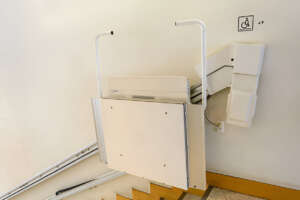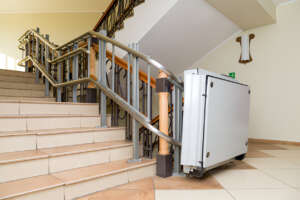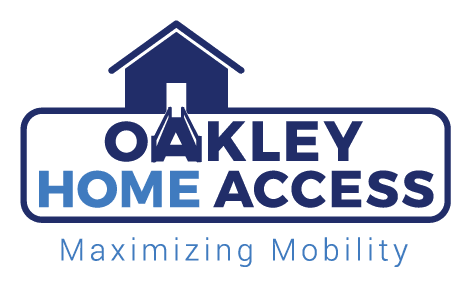Reasons to Install a Vertical Platform Lift for Wheelchair Accessibility
Key Takeaways
- A Vertical Platform Lift for Wheelchair accessibility enhances mobility and independence for individuals with mobility challenges.
- It helps businesses, comply with ADA regulations, creating a more inclusive environment.
- Vertical platform lifts improve safety by reducing the risk of accidents on stairs.
- Installing a lift can increase property value and future-proof homes and businesses for aging in place.
- Compared to traditional elevators, vertical platform lifts are a cost-effective solution for improving accessibility.

Ensuring that your property is accessible to individuals with mobility challenges is more important than ever. For residents and businesses, a vertical platform lift for wheelchair accessibility offers a practical, safe, and cost-effective solution to improve mobility and inclusivity. Here are the top five reasons to consider installing a vertical platform lift for wheelchair accessibility.
1. Enhanced Mobility and Independence
A vertical platform lift provides individuals in wheelchairs and scooter users with greater freedom to move between levels without relying on assistance. Whether it’s for a residential or commercial property, having a lift ensures that everyone can access all areas safely and comfortably.
Why it matters:
- Provides independence for wheelchair users.
- Reduces the need for caregiver assistance.
- Promotes dignity and self-reliance.
2. ADA Compliance for Businesses
Businesses in Washington, DC, must adhere to ADA (Americans with Disabilities Act) regulations to ensure their premises are accessible to all. Installing a Vertical Platform Lift for Wheelchair accessibility is a straightforward way to meet these requirements.
Benefits for businesses:
- Avoid potential fines for non-compliance.
- Create a welcoming environment for all customers.
- Demonstrate a commitment to inclusivity.
3. Improved Safety for Everyone
Stairs can be hazardous for individuals with mobility challenges, increasing the risk of accidents. A vertical platform lift provides a safe alternative, reducing the likelihood of falls and injuries.
Safety features of a vertical platform lift:
- Anti-slip platforms.
- Safety sensors to detect obstacles.
- Emergency stop buttons for added security.
- Non-skid platforms made from epoxy crushed and recycled tires, ensuring durability and safety.
4. Increased Property Value
Installing a vertical platform lift can increase the value of your property by making it more accessible and appealing to a broader range of potential buyers. Homes and businesses with accessibility features are in higher demand, especially in communities.
Long-term benefits:
- Attract more buyers or tenants.
- Future-proof your property for aging in place.
- Show your commitment to accessibility.

5. Cost-Effective Accessibility Solution
Compared to traditional elevators, a vertical platform lift is a more affordable and space-saving option. It provides the same level of accessibility without the extensive construction work required for an elevator installation. While some standard models are readily available, most wheelchair lifts require 2 to 3 weeks of manufacturing, plus shipping time.
Why it’s cost-effective:
- Lower installation costs compared to elevators.
- Minimal maintenance requirements.
- Suitable for both indoor and outdoor use.
Choosing the Right Vertical Platform Lifts
Selecting the right vertical platform lift can seem overwhelming given the variety of options available. To make an informed choice, consider several key factors:
- Maximum Lift Height: Assess the height you need to cover, whether it’s a few steps or a full story. This will help you determine the maximum lift height required.
- Weight Capacity: Ensure the lift can support the combined weight of the user and their mobility device. This is crucial for safety and functionality.
- Usable Width: Measure the space where the lift will be installed to ensure it fits comfortably. The usable width should accommodate the mobility device without any issues.
- Mobility Device Compatibility: If the user has a specific mobility device, such as a wheelchair or scooter, verify that the lift is compatible with it.
- Indoor or Outdoor Use: Decide if the lift will be installed indoors or outdoors. Outdoor lifts need to be weather-resistant and durable.
- Lifting Heights: Consider the different heights the lift needs to reach and choose a model that can handle these variations.
- Weight Capacity: Double-check the lift’s weight capacity to ensure it meets your needs.
By evaluating these factors, you can choose a vertical platform lift that perfectly suits your requirements, ensuring safety and convenience.
Home and Commercial Applications
Vertical platform lifts are versatile and can be used in various settings to enhance accessibility and convenience. Here are some common applications:
- Home Use: Installing a vertical platform lift in a home can significantly improve accessibility for individuals with disabilities, seniors, or those with mobility issues. It allows for easy movement between different levels of the house.
- Commercial Use: In commercial buildings such as offices, restaurants, and retail stores, vertical platform lifts provide essential accessibility for customers and employees, ensuring compliance with ADA regulations.
- Outdoor Use: Vertical platform lifts can be installed in outdoor settings, such as parks, plazas, and sidewalks, to provide accessibility for people with disabilities. These lifts are designed to withstand various weather conditions.
- Indoor Use: Within buildings like offices, schools, and hospitals, vertical platform lifts offer a practical solution for moving between floors, ensuring that all areas are accessible to everyone.
By understanding the different applications of vertical platform lifts, you can choose the right solution to meet your accessibility needs, whether for home or commercial use.
Conclusion
A Vertical Platform Lift for Wheelchair accessibility is an essential addition for any Washington, DC, property seeking to improve mobility and inclusivity. There are several wheelchair platform lifts models available, each designed to meet specific needs and preferences. Whether you’re a homeowner or business owner, the benefits of installing a vertical platform lift go beyond compliance—they provide safety, independence, and long-term value.
If you’re considering installing a vertical platform lift, contact Oakley Home Access in Washington, DC, for expert advice and installation services. Ensure your property is accessible to everyone and take a step towards creating a more inclusive community. Contact us today.
Frequently Asked Questions (FAQ)
1. What is a Vertical Platform Lift for Wheelchair accessibility?
A vertical platform lift is a mechanical device that transports individuals in wheelchairs or mobility devices between different levels, ensuring safe and easy access to homes or businesses.
2. How much does it cost to install a vertical platform lift in Washington, DC?
The cost can range depending on the type of lift and installation requirements. Contact Oakley Home Access for an accurate estimate.
3. Are vertical platform lifts safe?
Yes, vertical platform lifts are equipped with safety features like anti-slip platforms, safety sensors, and emergency stop buttons to ensure a secure experience for users.
4. Can vertical platform lifts be installed outdoors?
Yes, there are models specifically designed for outdoor use, with weather-resistant features to withstand Washington DC’s climate.
5. Do vertical platform lifts require maintenance?
Regular maintenance is essential to keep the lift in good working condition. It’s recommended to schedule routine inspections and follow the manufacturer’s guidelines for upkeep.
6. Is a permit required to install a vertical platform lift in Washington, DC?
In most cases, a permit is required for installation. It’s best to work with a professional installer who can handle the permitting process on your behalf.
